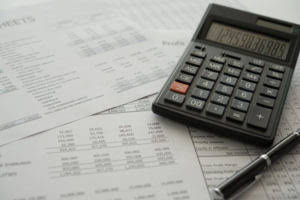
In financial statements, the abbreviation “MM” is commonly used to denote millions. This shorthand is particularly useful in simplifying the presentation of large figures, making financial documents more readable and less cluttered. For instance, a company reporting $5,000,000 in revenue would simply state $5MM, streamlining the https://www.instagram.com/bookstime_inc data for stakeholders who need to quickly grasp the financial health of the organization. In the 20th century, the globalization of markets and the rise of multinational corporations underscored the importance of standardized financial reporting.
Cross-Price Elasticity: Calculations, Types, and Market Implications
Furthermore, using MM can make a large-scale monetary value easier to quickly grasp, both visually and conceptually, as it simplifies the financial quantities being discussed or presented. The term enables clarity and consistency, reducing the risk of misunderstandings due to different interpretations of number notation. The term MM is used in the finance world to denote one million and is a standard nomenclature used across the globe. It is commonly used in financial documents, contracts, and communication, especially those regarding large monetary amounts. In various aspects of finance such as budgeting, financial analysis, reporting, and forecasting, the use of MM aids in ensuring accuracy and precision. The finance term MM, denoting ‘Million’, is important due to its wide usage in financial documents, reports, and communications to represent large quantities of money.
- In finance and accounting, MM (or lowercase “mm”) commonly denotes that the units of figures presented are in millions.
- The need for efficient and standardized reporting methods became more pressing, and “MM” emerged as a practical solution.
- Merchants and bankers required a standardized way to represent large sums of money, leading to the adoption of “MM” to denote millions.
- In financial statements, the abbreviation “MM” is commonly used to denote millions.
How is MM used in financial statements?
International accounting standards began to take shape, with organizations like the International Accounting Standards Board (IASB) and the Financial Accounting Standards Board (FASB) playing pivotal roles. The use of “MM” became more entrenched as these standards aimed to harmonize financial reporting across different jurisdictions, ensuring consistency and comparability. The industrial revolution further accelerated the adoption of “MM” in financial reporting.

Example of MM in Financial Statements
Moreover, the use of “MM” aligns with the principles of transparency and comparability advocated by international accounting standards. Organizations like the International Financial Reporting Standards (IFRS) emphasize the need for consistent and https://www.bookstime.com/ comparable financial statements. By adopting “MM,” companies can ensure that their financial reports meet these standards, enhancing their credibility and attractiveness to global investors.

MM in International Reporting
- When an analyst must present various different types of units, it is recommended to add a “units” column so that each item contains a label for easy reference.
- For example, when comparing financial statements from different companies, the use of MM ensures that figures are easily comparable, reducing the risk of misinterpretation.
- The Notation MM for representing Millions is becoming less common as it creates confusion between the representation of M and MM, whereas the M denotes the Thousand.
- Our rigorous editorial process includes editing for accuracy, recency, and clarity.
- As businesses grew in scale and complexity, the volume of financial data increased exponentially.
- The use of MM is not just about convenience; it also plays a role in standardizing financial reporting.
On the other hand, “MM” stands for millions, a convention that has gained widespread acceptance in financial reporting and analysis. The double “M” originates from the Latin “mille mille,” meaning “thousand thousand,” which equates to one million. This notation is particularly useful in corporate finance, investment banking, and other sectors where transactions and valuations frequently reach into the millions. For instance, a financial analyst might report a company’s market capitalization as $500MM, clearly indicating $500,000,000. The use of “MM” to denote millions in financial contexts has a rich history that intertwines with the evolution of accounting and financial reporting practices.

Usage of MM in Financial Statements
As businesses grew in scale and complexity, the volume of financial data increased exponentially. The need for efficient and standardized reporting methods became more pressing, and “MM” emerged as a practical solution. It allowed accountants and financial analysts to present large figures in a more digestible format, facilitating better decision-making and financial planning.

Supercharge your skills with Premium Templates
As commerce and trade expanded during the Renaissance, the need for more sophisticated financial reporting became apparent. Merchants and bankers required a standardized way to represent large sums of mm finance meaning money, leading to the adoption of “MM” to denote millions. This period saw the rise of double-entry bookkeeping, a system that revolutionized accounting by providing a clear and systematic method for recording financial transactions. The use of “MM” fit seamlessly into this new framework, offering a concise way to represent substantial amounts without cluttering financial records. The Notation MM for representing Millions is becoming less common as it creates confusion between the representation of M and MM, whereas the M denotes the Thousand. But due to confusion between M and MM, now the alternative notations are used for representing thousands and millions.
